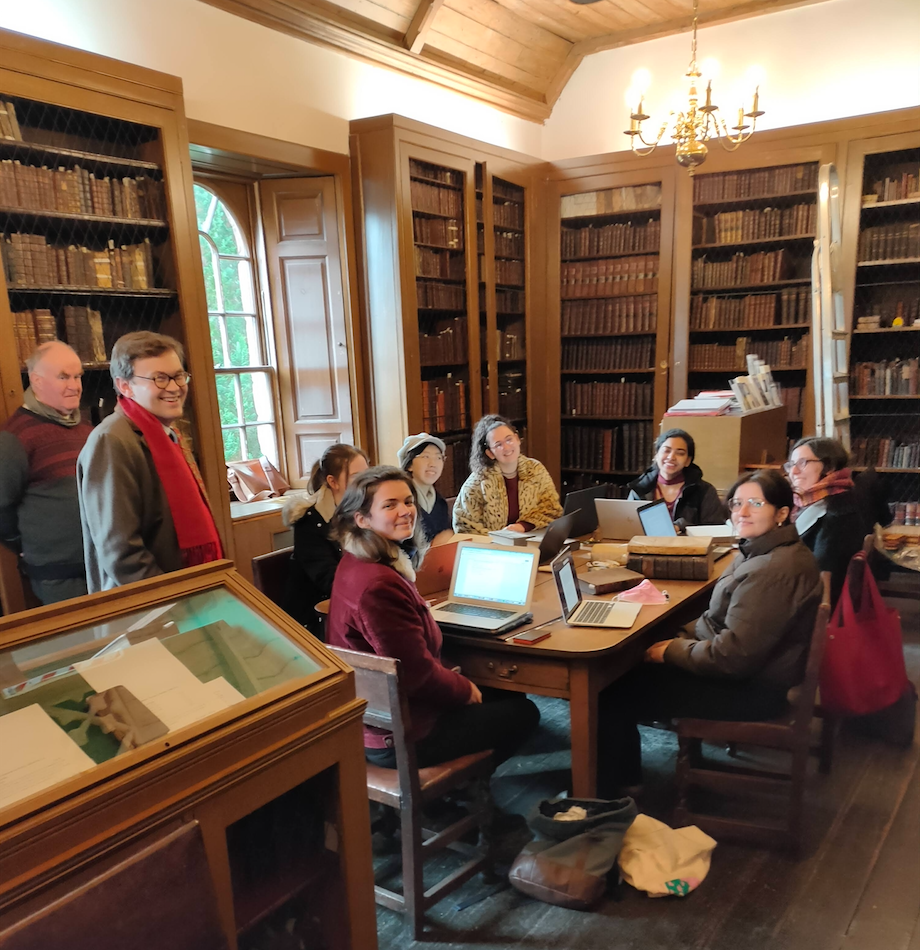“Once you have approached the mountains of cases in order to mine the books from them and bring them to the light of day – or, rather, of night – what memories crowd in upon you!”
— Walter Benjamin, “Unpacking My Library”
This year I’ve been teaching a series of masterclasses on descriptive bibliography to Stirling postgrads. Many scholars – not to mention the general public – would think this a pretty dull thing to teach, maybe even a duller thing to learn, but in explaining to students how to methodically, thoughtfully, and lovingly describe the books in front of them, I find my own delight in what I do renewed.

Too often in the modern world our eyes slip across the things in front of us, quickly scanning a news article on our phone, speed-reading through a set text before a seminar, glancing hurriedly across supermarket shelves for the item we need. Bibliography forces us to slow down, to concentrate our attention on a single object, the book, and to allow ourselves to perceive that object – slowly, intensively, fully. When we log on to EEBO or Google Books to check a citation in an early printed book, we engage so shallowly with its digital surrogate, treating it like a mere information repository – and, perhaps, this is how many people think of books – but when we study a book with the tools of bibliography we see it for itself, not as a means to an end, but as an object for contemplation which is as it is.

And when we do this, we open ourselves to the quiet joy of understanding. As we pursue the meditative processes of pagination and collation, of identifying the format, checking the chain lines, watching the running titles, we understand the book as a movement through time, from the compositor’s stick to the forme to the sheet to the folded page to the sewn quires to the battered and stained but undiminished object we now hold in our hands. The book, no matter how quietly it sits on the shelf, is always in motion and we are privileged to discover that motion in our contemplation. When we perceive this, our understanding shifts. We lay aside facile beliefs in the repetitive uniformity of mechanical reproduction and we know that the book, this book, is perfectly unique, an arrow fired from the past into the future.
Teaching reminds me of these things, which I might otherwise come to take for granted, and that reminder is a delight. The joys of bibliography are quiet ones, yet deep.
(c) 2021 Kelsey Jackson Williams

Leave a comment